Related Resources: material science
Stress Concentration Factors For Shafts and Cylinders
Strength of Materials | Beam Deflection and Stress
Stress Concentration Factors for Shafts and Cylinders:
Stress concentration is related to type of material, the nature of the stress, environmental conditions, and the geometry of parts. When stress concentration factors that specifically match all of the foregoing conditions are not available, the following equation may be used:
K = 1 + q (Kt - 1)
Where:
Kt = Theoretical stress concentration factor which is a function of the geometry. When geometry is such that it provides not theoretical stress concentration, Kt =1.
q = Index of sensibility
Curves for evaluating Kt. For constant stresses in cast iron and in ductile materials, q = 0 (hence K = 1). For constant stresses in brittle materials such as hardened steel, q may be taken as 0.15; for very brittle materials such as steels that have been quenched but not drawn, q may be taken as 0.25. When stresses are suddenly applied (impact stresses) q ranges from 0.4 to 0.6 for ductile materials; for cast iron it is taken as 0.5; and, for brittle materials, 1.
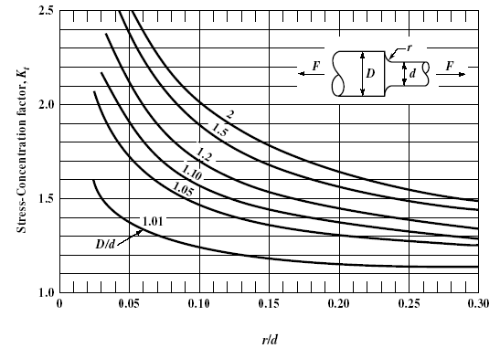
Stress-concentration factor, Kt , for a filleted shaft in tension
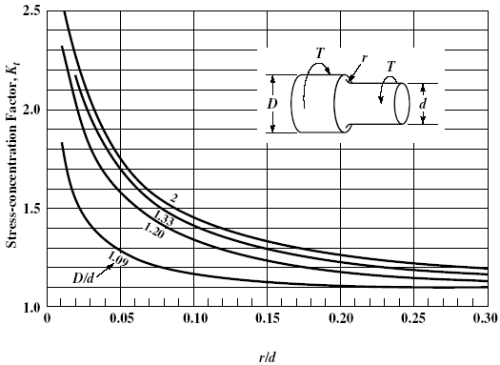
Stress-concentration factor, Kt, for a filleted shaft in torsion
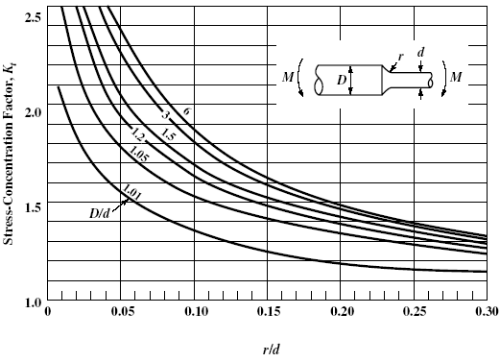
Stress-concentration factor, Kt , for a shaft with shoulder fillet in bending
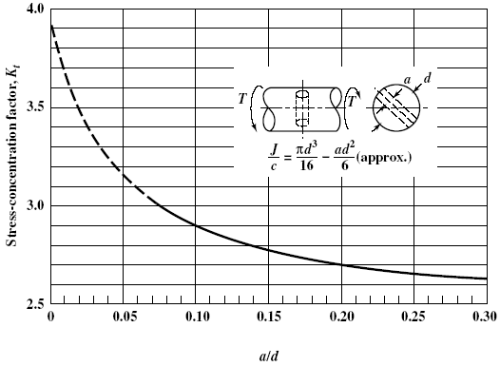
Stress-concentration factor, Kt, for a shaft, with a transverse hole, in torsion

Stress-concentration factor, Kt, for a grooved shaft in bending
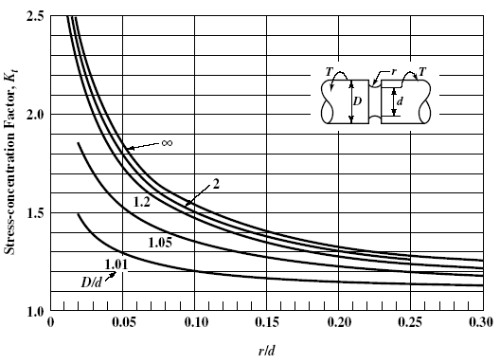
Stress-concentration factor, Kt, for a grooved shaft in torsion
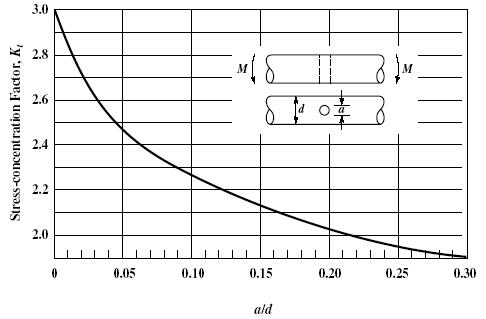
Stress-concentration factor, Kt, for a shaft, with a transverse hole, in bending